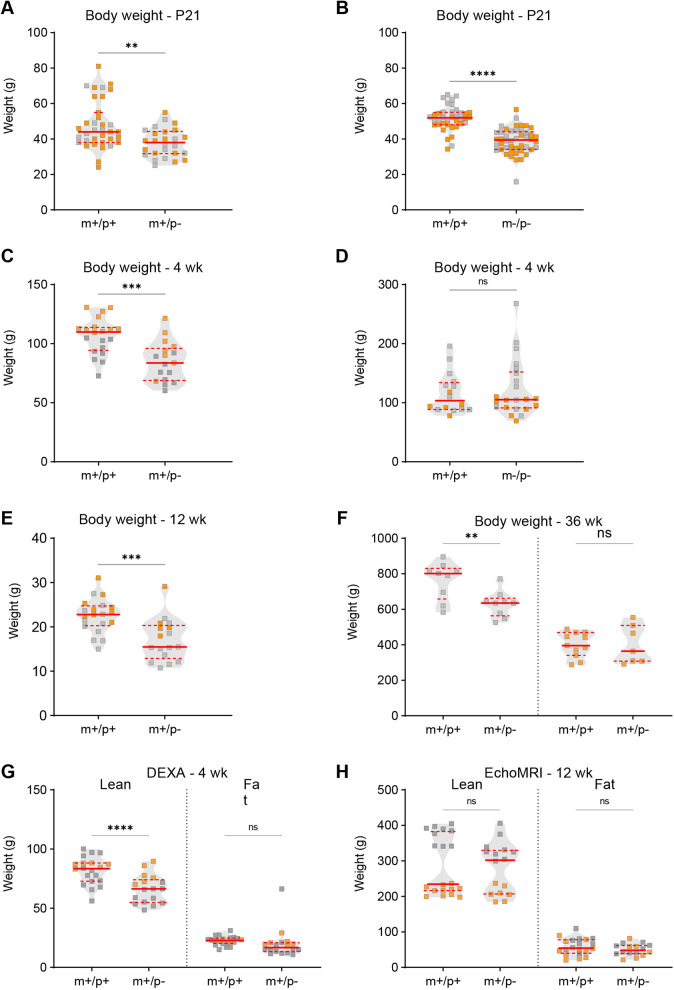Fig. 5.
Alterations in body weight and composition were found in rats with paternally inherited Magel2 mutation. (A-D) For Magel2m+/p− rats (m+/p−), Magel2m−/p− rats (m−/p−) and their respective wild-type littermates (m+/p+), body weight was assessed at P21 and at 4 weeks. At P21, both m+/p− and m−/p− rats showed a significant reduction in weight compared to that of their respective m+/p+ littermates (A,B); in contrast, at 4 weeks, m+/p− rats, but not m−/p− rats, showed a significant reduction in body weight (C,D). (E,F) Magel2m+/p− (m+/p−) rats showed decreased body weight at 12 weeks (E); at 36 weeks, only male m+/p− rats still showed reduced body weight (F). (G,H) Body composition measurements of lean and fat mass were evaluated by dual-energy x-ray absorptiometry (DEXA) at 4 weeks and magnetic resonance imaging (MRI) at 12 weeks. At 4 weeks, Magel2m+/p− (m+/p−) rats showed a significant reduction in lean, but not fat, mass (G); at 12 weeks, the absence of a genotype-by-sex interaction resulted in an overall genotype group analysis; no differences were observed between m+/p− and their respective m+/p+ littermates (H). Violin plots were used to indicate data density and distribution, with gray (males) and orange (females) squares within each genotype/group category; solid red lines indicate the median and dashed red lines indicate quartiles. **P<0.01; ***P<0.001; ****P<0.0001; ns, not significant; mutant rats relative to wild-type littermate controls; two-way ANOVA with genotype and sex as factors, followed by post-hoc analyses as appropriate.

